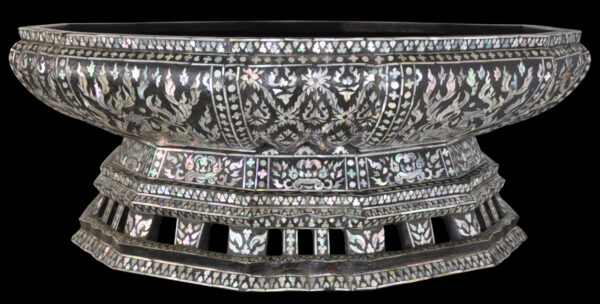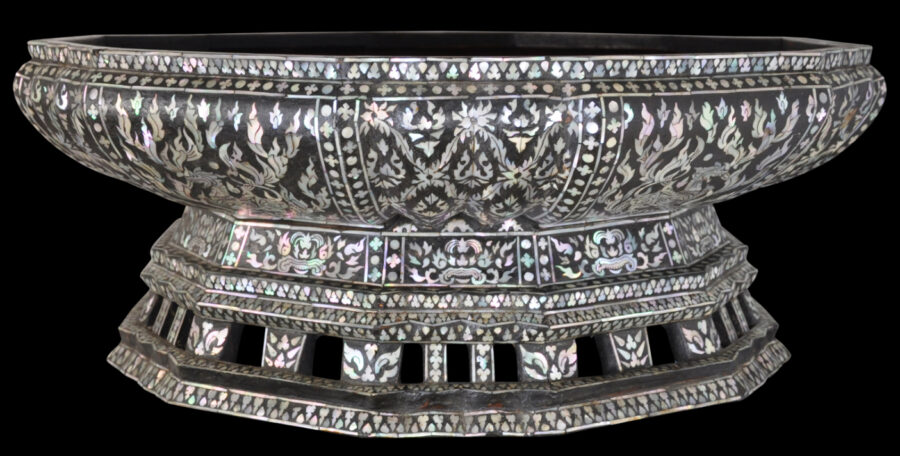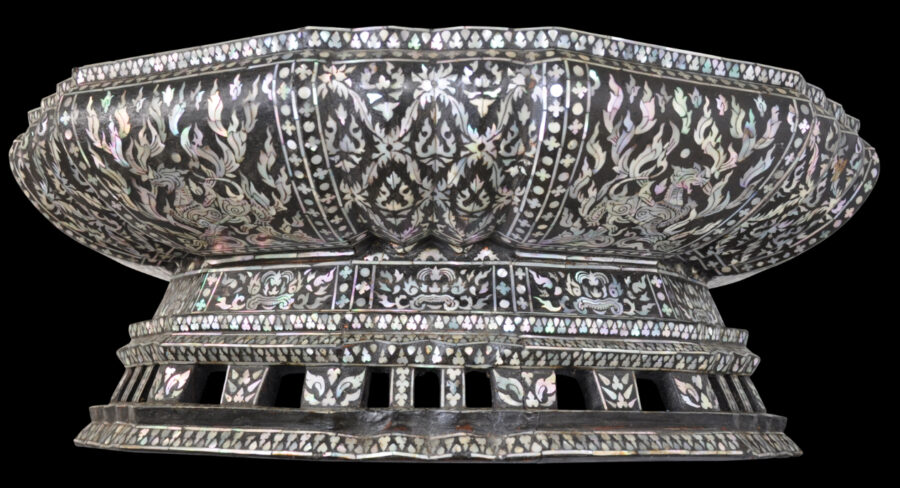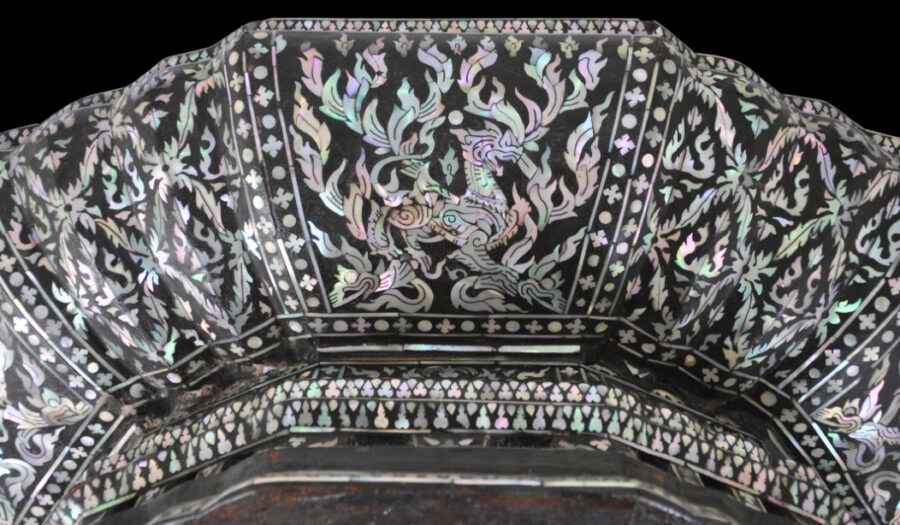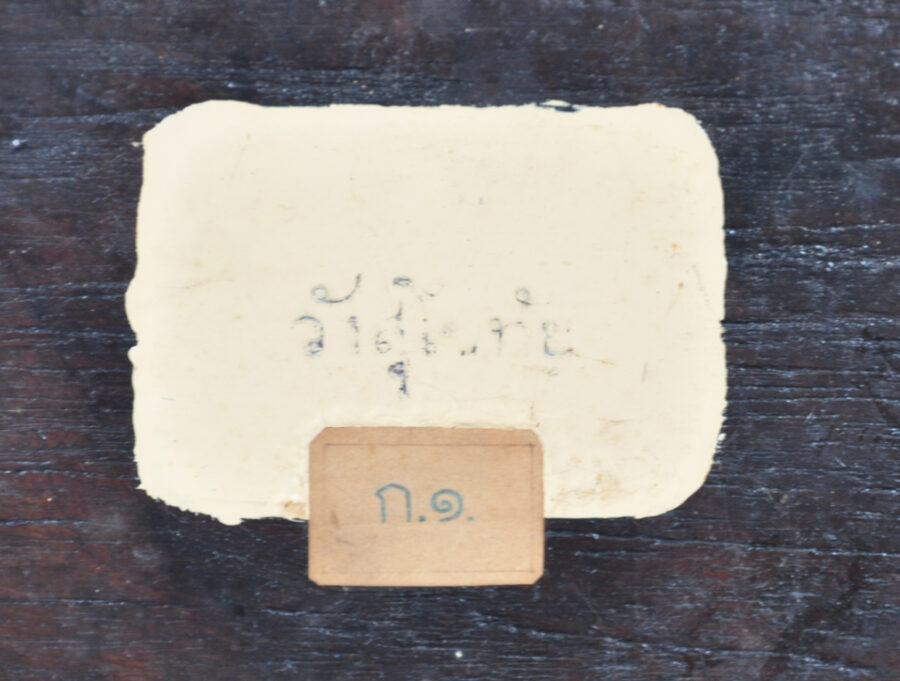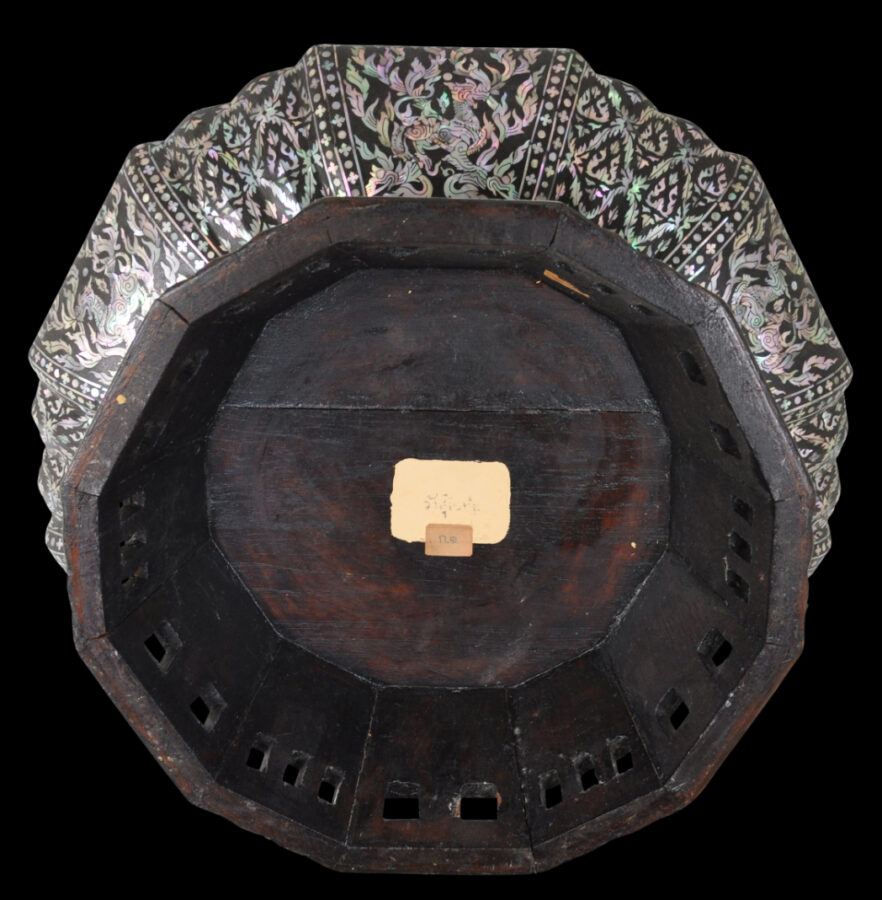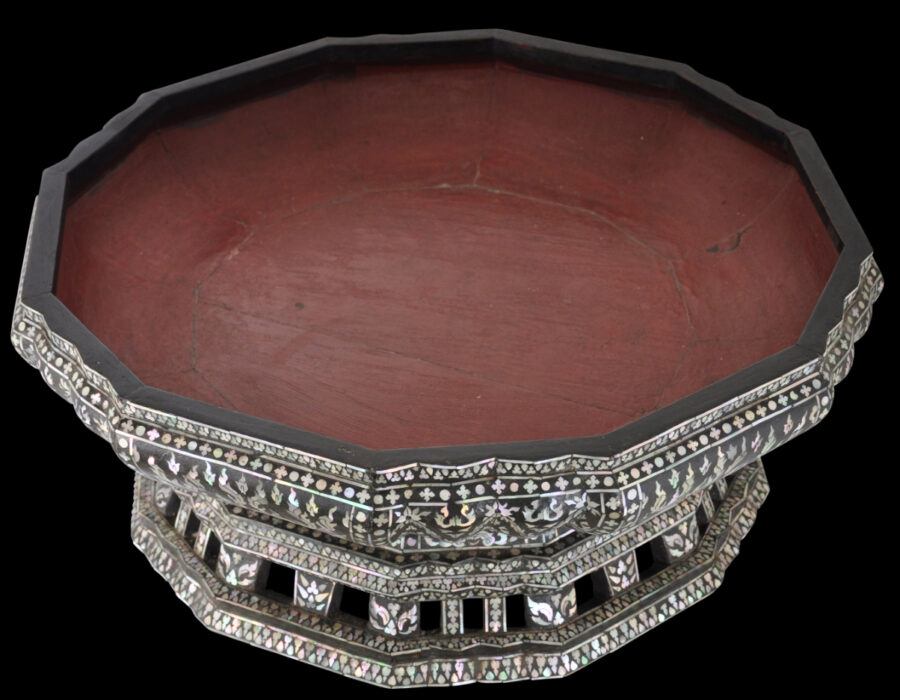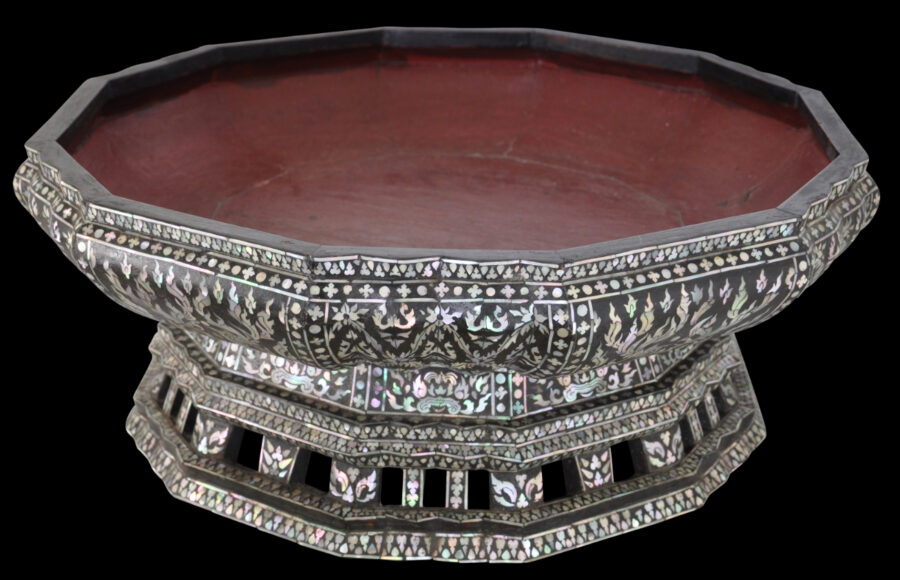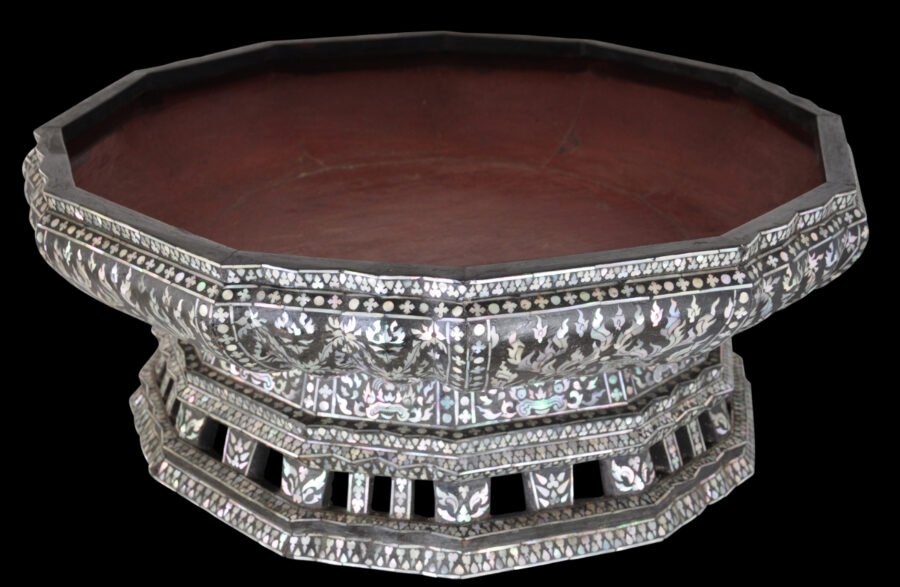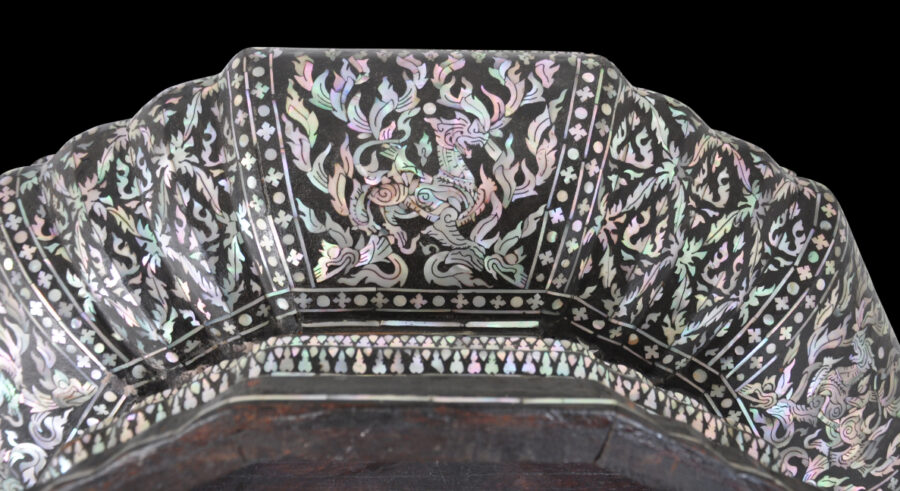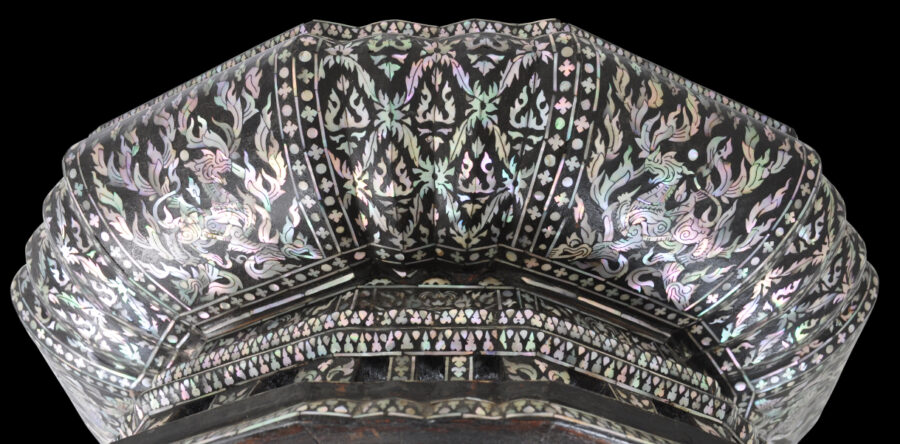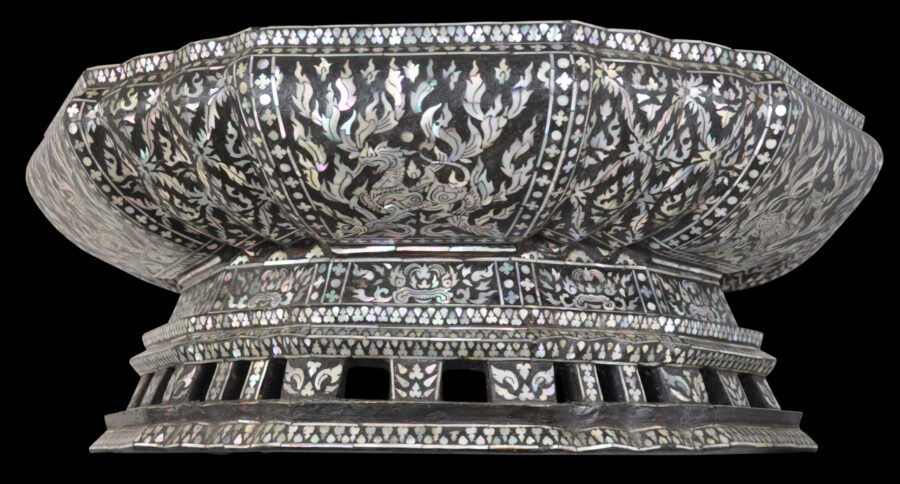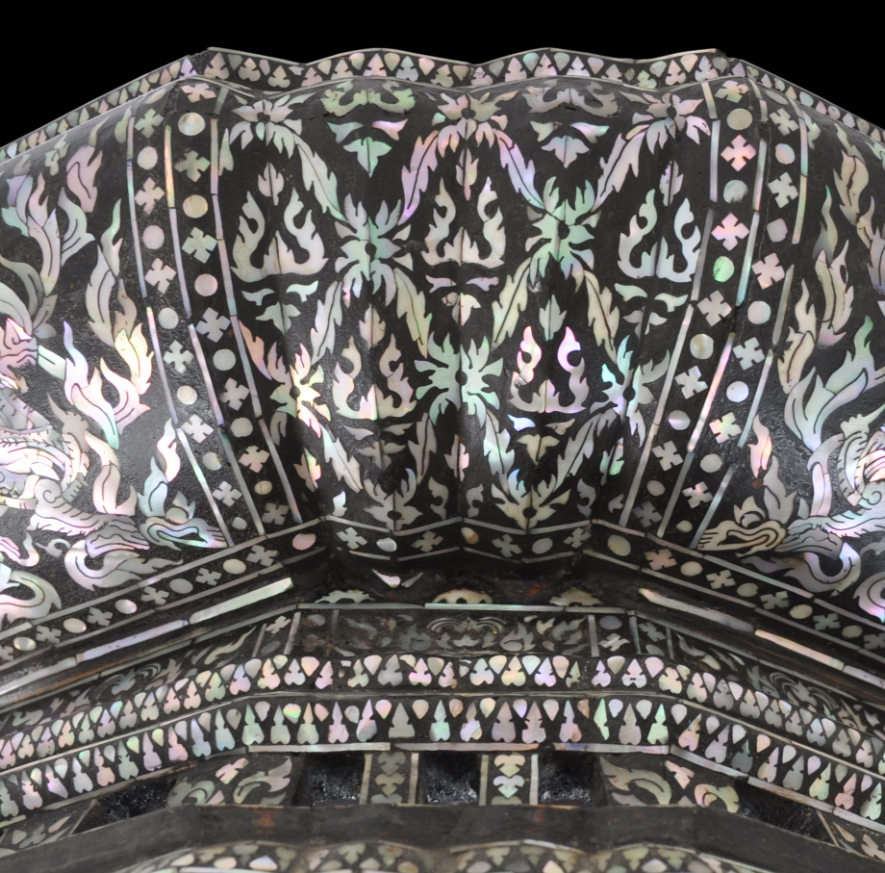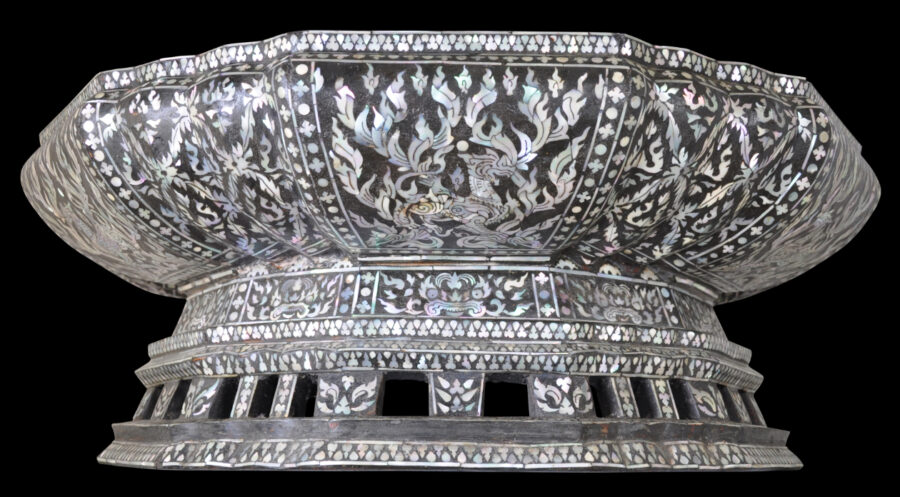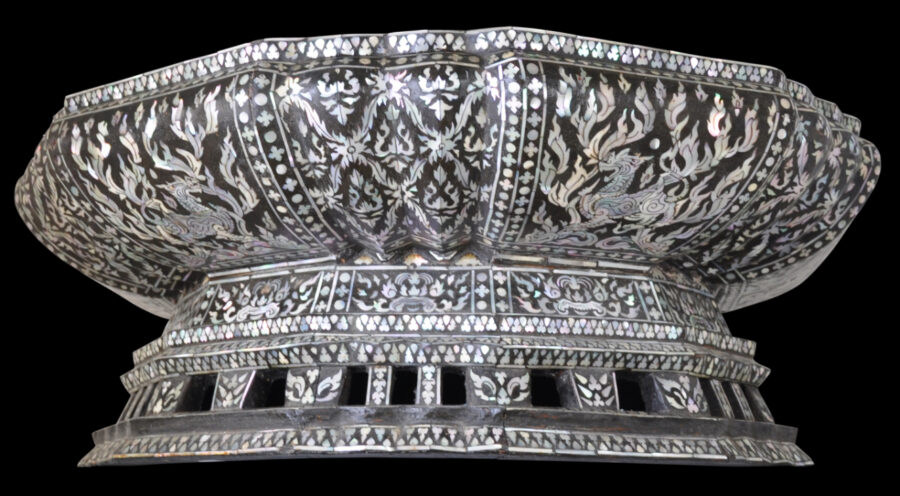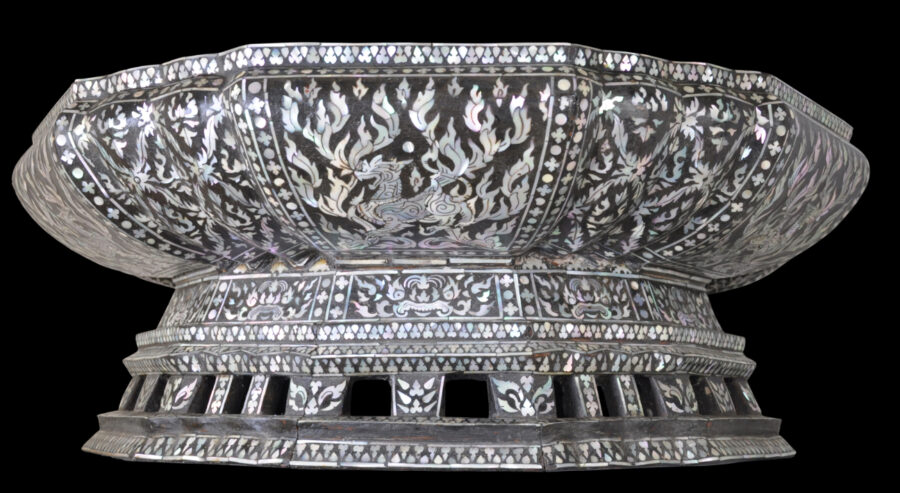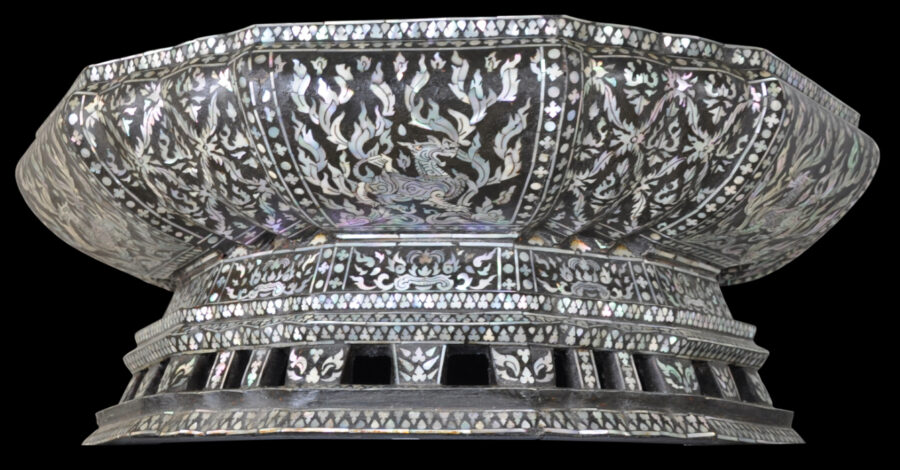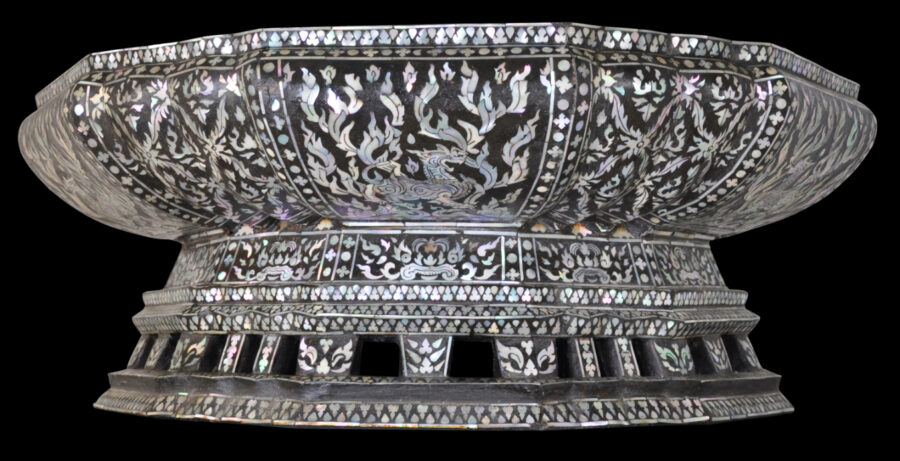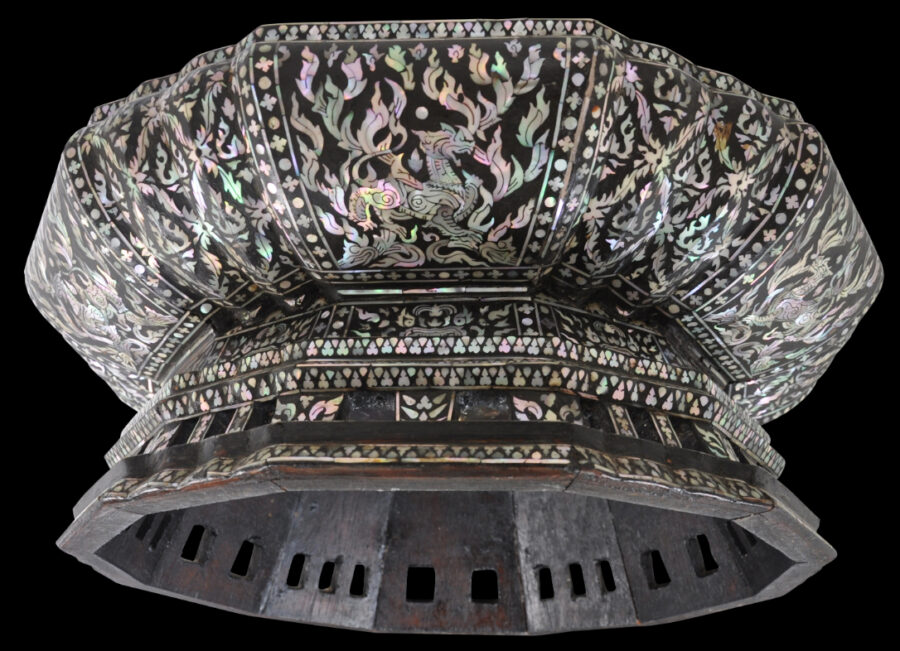This unusually large, twelve-sided talum or offering bowl with a pierced foot is decorated with mother-of-pearl inlay imbedded in black lacquer over a wooden substrate. Its size and the extraordinary quality of the inlay suggests it is a palace piece, and indeed, the underside has several old labels written in Thai, one of which reads ‘Sukhothai Palace’. Another gives an inventory number. There are the remnants of another as well, probably an earlier inventory number label. It seems that the vessel once was part of the inventory of the Sukhothai Palace. The vessel predates the Palace and would have been brought to it from another royal building.
The sides of the bowl are elaborately and densely inlaid, in Bangkok-style, alternatively with mythical Thai lions (singha) amid flaming leaf motifs (lai kranok krue tao), and sides that are crenulated or redented and inlaid with motifs in the form Chakri Dynasty cyphers. The neck just above the foot is decorated with protective ‘monster’ masks. The shell is of the highest quality and is unusually luminescent and so has the affectation of mook or muk (shiny). The interior has its original red colour.
The talum was used either as it is, or used with a tall cover in which case it was known as a tiep mook (also rendered as tian muk) and used in the palace by members of the royal family to proffer offerings to senior monks at royal ceremonies.
As noted, it has twelve sides. This is the largest number of such sides that such a vessel is known to have. Other examples more usually have six or eight sides.
The Sukhothai Palace (or Sukhodaya Palace) is a royal residence situated in Bangkok’s Dusit District. It was built in 1918 and had been commissioned by Queen Saovabha, the wife of King Chulalongkorn as a wedding gift for her youngest son, Prince Prajadhipok, the Prince of Sukhothai and Rambhai Barni. Prince Prajadhipok later ascended the throne as King Prajadhipok (King Rama VII). King Vajiralongkorn (King Rama X) also lived in the Palace before he ascended the throne. Currently, it is the official residence of Princesses Bajrakitiyabha and Sirivannavari Nariratana, both daughters of the current King. The Palace is regarded as a masterpiece of design in its combination of Western architecture and Thai decorative arts. It consists of three main buildings all are connected by raised walkways decorated with Thai wood carvings and patterned eaves.
Mother-of-pearl lacquer work has a long history in Thailand. During the early Bangkok period (1782-1824), mother-of-pearl inlay work was so popular that high-ranking members of the royal family were appointed to oversee its production in a bureau known as ‘the Department of Mother-of-Pearl Inlay’ (McGill, 2009, p. 200). The fineness and sweeping, grand nature of the scenes depicted on this box suggest it might well have been a product of the bureau. But by the end of the nineteenth century, the art form started to lose its popularity. The bureau was closed down in 1926.
Typically, the shells from which the shell inlay used was sourced came from the coral reefs along the coast of Phuket and Surat Thani Provinces in Thailand’s south and Chanthaburi and Trat Provinces of the east. Thrones for kings and palace and temple doors were among the larger items lacquered and inlaid with pearl shell. Monks strictly enforced a 19th century rule against the use of precious metals which encourage the use of embellished lacquer. Religious artefacts with mother-of-pearl inlay are also documented as having been presented as gifts to senior monks in Sri Lanka as early as 1814 (Byachrananda, 2001).
The vessel here is in excellent condition for its size and age. Losses to the mother-of-pearl are relatively trivial, and the inlay work is some of the finest we have seen.
References
Byachrananda, J., Thai Mother-of-Pearl Inlay, River Books, 2001.
Diskul, M.C.S., et al, The Suan Pakkad Palace Collection, The Home of Princess Chumbhot of Nagara Svarga, 1982.
McGill, F. (ed.), Emerald Cities: Arts of Siam and Burma, 1775-1950, Asian Art Museum, 2009.
McQuail, L., Treasures of Two Nations: Thai Royal Gifts to the United States of America, Smithsonian Institution, 1997.


